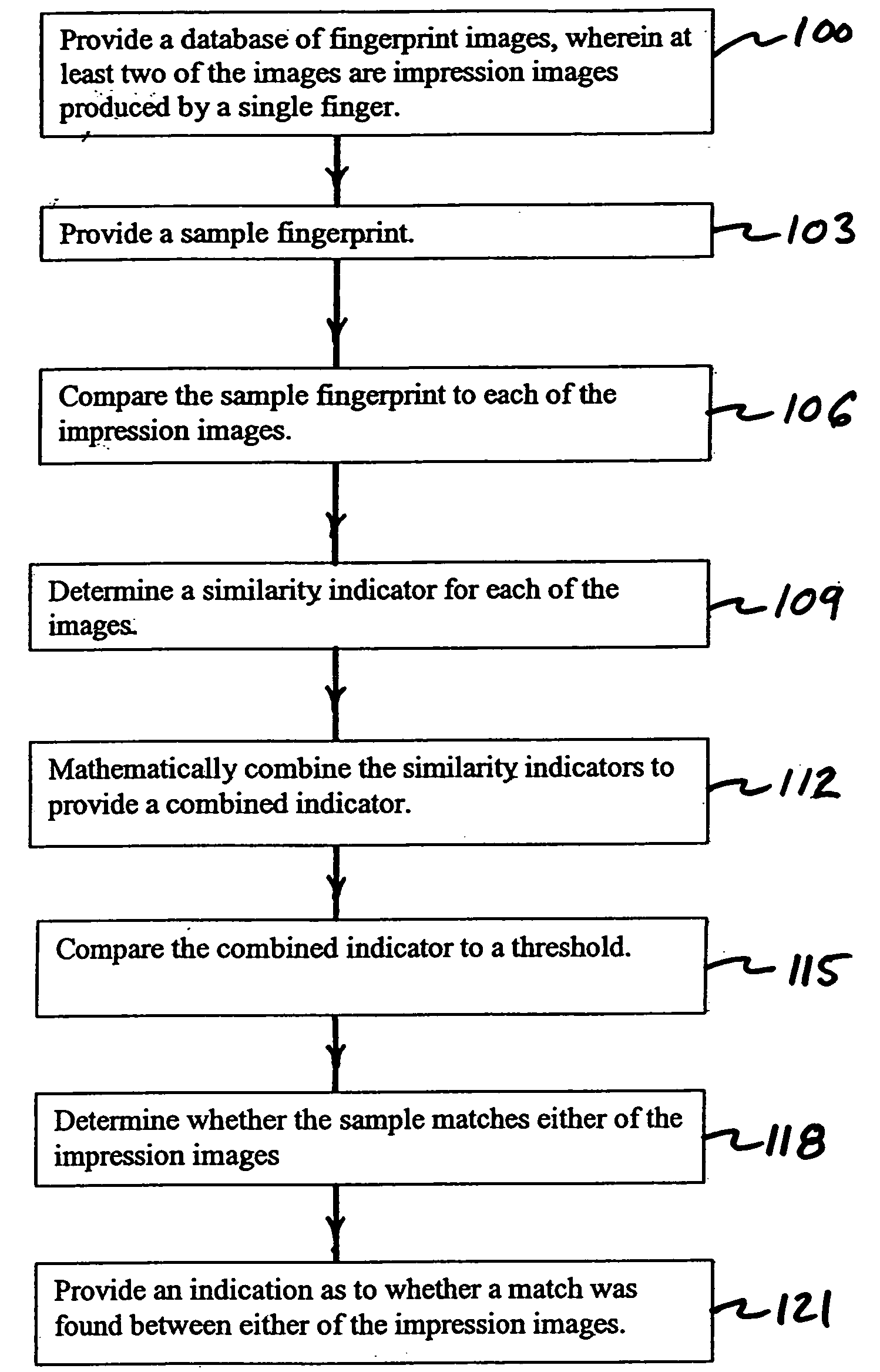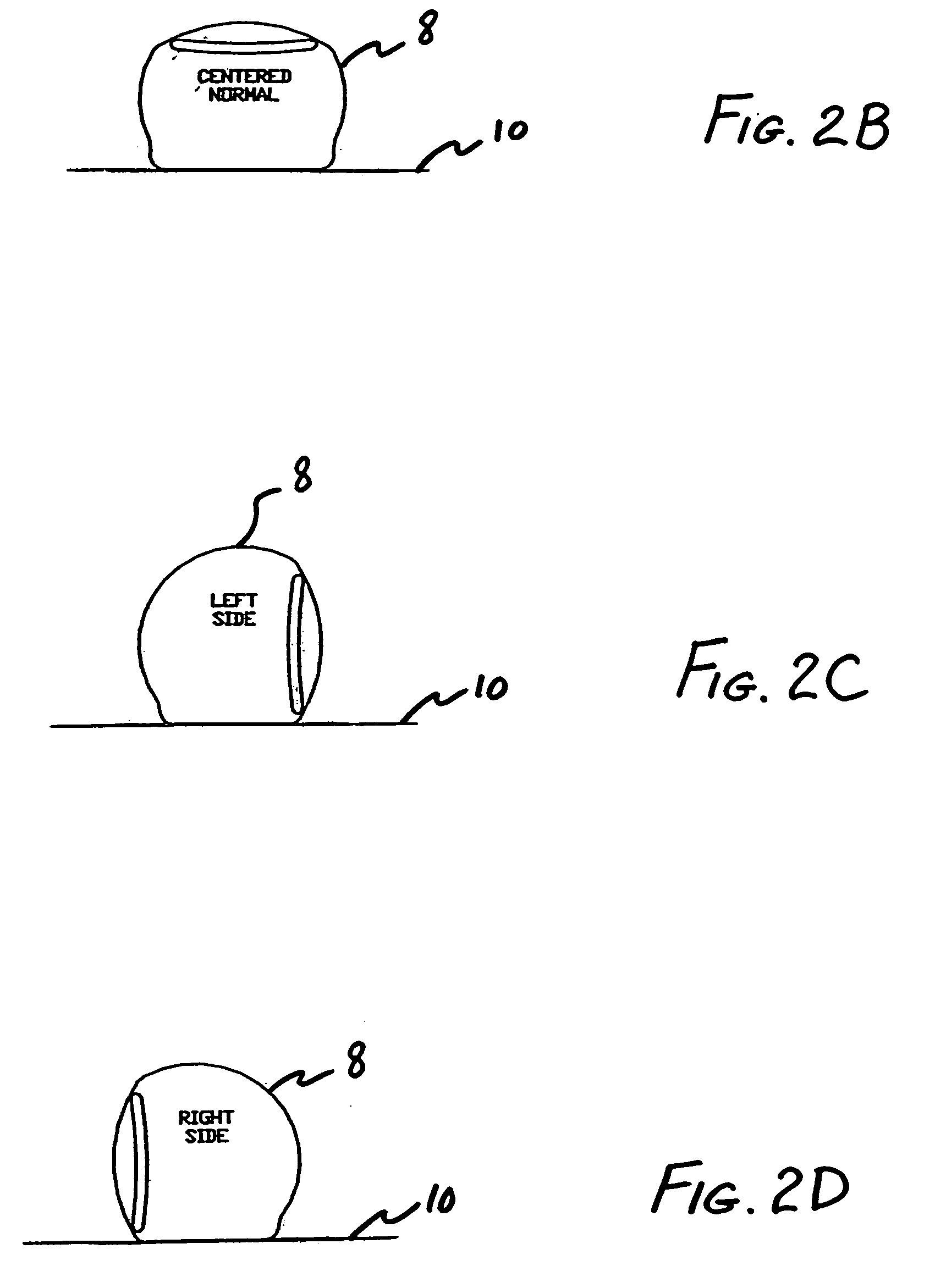Fingerprint image database and method of matching fingerprint sample to fingerprint images
a fingerprint image and database technology, applied in the field of livescan fingerprint recording process, can solve the problems of image distortion, inability to match a sample image with a database image and thereby recognized, and inability to meet the request,
- Summary
- Abstract
- Description
- Claims
- Application Information
AI Technical Summary
Benefits of technology
Problems solved by technology
Method used
Image
Examples
Embodiment Construction
[0018] A method according to the invention may gather and store in a database a set of plain impression fingerprint images that represent the skin surface friction ridge detail of one or more fingers. For example, the impression images of a finger 8 may correspond to an end of the finger 8 (see FIG. 2A), a palm-side of the finger 8 (see FIG. 2B), a left side of the finger 8 (see FIG. 2C), or a right side of the finger 8 (see FIG. 2D) pressed against a surface 10. The surface 10 may be an imaging platen of a live-scan ultrasonic imaging device. Further, impression images may correspond to that portion of the friction ridge surface pressed against the surface 10 when the finger 8 is in a tilted orientation (see FIG. 2E). A rolled impression fingerprint image may also be stored in the database. The recorded fingerprint images may be obtained using optical, ultrasonic or conventional paper and ink fingerprinting methods. Images corresponding to more than one finger may be gathered and s...
PUM
 Login to View More
Login to View More Abstract
Description
Claims
Application Information
 Login to View More
Login to View More - R&D
- Intellectual Property
- Life Sciences
- Materials
- Tech Scout
- Unparalleled Data Quality
- Higher Quality Content
- 60% Fewer Hallucinations
Browse by: Latest US Patents, China's latest patents, Technical Efficacy Thesaurus, Application Domain, Technology Topic, Popular Technical Reports.
© 2025 PatSnap. All rights reserved.Legal|Privacy policy|Modern Slavery Act Transparency Statement|Sitemap|About US| Contact US: help@patsnap.com



